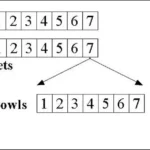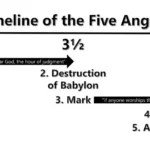Reading the Bible in one’s own mother tongue language
It was the culmination of years of hard work when the Asengseng people of PNG finally received the New Testament in their own language in March 2007. Our greatest desire was that they could read God’s message in their own heart language which they had never been able to do previously.
Any missionary or Bible Teacher loves to communicate truth to his hearers. That’s why you spend years learning the skills needed in linguistics, phonetics, grammar and learning a style of teaching that really communicates. And that is what training is all about as well in learning personal and spiritual formation skills so as to be able to keep ministering through the practical difficulties of living cross-culturally and with a people group that is so different. All these skills come into play in being able to get to the point where you can share the gospel and communicate effectively.
Process of Bible Translation
One of the things about communicating the gospel and translating the Bible is to realise that the Word of God is not only the explicit Word of God in the black and white text of the pages but also the implied Word of God. I will explain what I mean. Because of the differences between the Biblical languages in which the Bible is written and then the languages that we read it in with our mother tongue (for me English) and then the language you may be translating into, a particular verse or passage may really be lost in translation. I can remember my first passage that I had a go at translating as a trainee Bible Translator. It was Acts 5 and the story of Ananias and Sapphira. The idea is to get a new Bible Translator to practice on a narrative portion which would be much simpler than a more complicated portion such as when Paul argues rhetorically in some of his letters. So Acts seems to be a good place to start. After continuing on in translating Acts there seemed to be problems and my translation helpers were just not getting it. They weren’t able to repeat back what the passages were saying very well. My translation consultant at the time said something very disheartening, that in her opinion we did not have a viable translation. Whilst that comment hurt at the time it instilled in me to get better at the translation process. It is a complicated multi-step process and one needs to be highly organised in the process through use of excel spreadsheets etc. Eventually you get better and better at the process and you learn more skills on the job.
It’s all about the grammar
But in the process of going from the original Greek language through a modified literal English version such as the NASB (New American) and then into a tribal language in which we were working I realised that different languages were definitely not constructed in the same way. A great example is the use in the Greek of the passive and active voice. Passive and active voices are used both in Greek and English but not in the receptor language that we were translating into which was the Asengseng language in West New Britain in PNG. Every passive construction in the Greek could, by and large easily be translated into English but then from English into Asengseng there was a problem as they only have active constructions. An example of a passive construction would be “the ball was hit by John.” The same if translated into an active construction would be “John hit the ball.” Both are saying the same thing but in a different way. In the Bible, passive constructions are often used when the actor doing the action is hidden because the actor was often God Himself or the actor was not known. It’s a way of conveying respect when God is omitted from the text. But the reader fills in the blanks so in effect the Word of God is not just the letters on the page but it is also what it is saying by extension of what the grammar is demanding. An example from the Scriptures is in Mark where Jesus was addressing a paralytic man: “Son, your sins are forgiven.”1 This is a passive construction and the actor is omitted but it is implied to be either God or Jesus. So it is the job of the translator to supply the actor with something like the following: “My son. I have let your bad ways to be gone.” And in fact that is a literal English translation of what we translated into the Asengseng. The actor supplied is “I” because it is Jesus who is forgiving the paralytic man. Now everything is brought out into the open and the actor has been made explicit and the actor is clearly doing the action on the object.
So my point is that the Word of God is not just the explicit Word of God but the implied Word of God. There are so many figures of speech and grammatical constructions in the Bible where grammatical information has been omitted in either the original language or needs to be omitted in the receptor language. Or maybe Biblical truth is not clear until we properly exegete the particular verse. And it is the job of the translator or the Bible Teacher to supply what really is implied or to bring information into the open that has been hidden in the English but is known in the Greek. But sometimes it is not easy to know what the implied information is and that is where we can get into problems. A rule taught in Bible translation principles is that where the original is not specific then you should try and keep it just as vague to leave open the way for different possibilities.
The goal of translation is to communicate the Gospel effectively
Communicating the gospel and all the vast pieces of information contained in the entire message is not easy at times but it is exciting, rewarding and challenging. And when you do see truth communicated and the lights start to go on in the hearer’s face then you know that it has been worth it all. We did see the lights go on in the faces of the Asengseng people and now the church is still going strong since having the New Testament translation in their hands since 2007. Take a look here at how the Asengseng are travelling in 2020…
New modern spoken English translation
Now I have a new translation project and that is to do another New Testament translation, this time into modern everyday spoken English. I am calling it the EDV (Everyday Dynamic Version). It will be easy to read and its aim is to explicate grammar that is hidden to the average everyday reader. It contains footnotes on problem areas and on verses which need more explanation. Download my EDV translation here.
- Mark 2:5 [↩]

















One Response
Steve you make it seem so easy however with this post of how it happens behind the scenes it is certainly enlightening and illustrates the iterations and learning required.
It seems a similar type of process for me doing software development so I highly recommend you take a look at OneNote as I make notes that comes to mind constantly… great ideas happens outside office hours. You can have the OneNote sync to mobile, tablet & pc. It’s great for shared shopping list as the one shopping ticks off purchased items… if you are an Apple fan they will have something similar